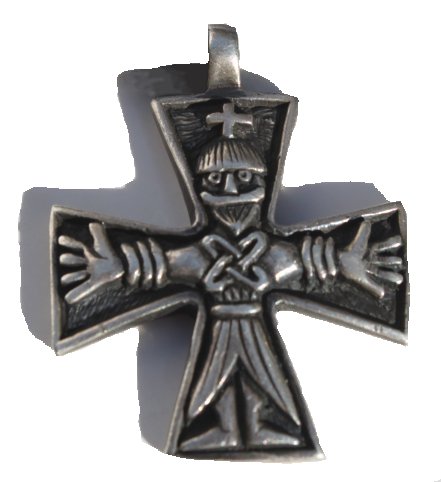 Iron Age
Iron Age
Before the arrival of the Romans, settlement in Cambridgeshire was restricted almost exclusively to the river courses and their gravel soil, but expanded during the Roman period so that occupation covered all of the dry ground of the river plains and the clay plateaus, and even extended into the outlying areas of the fens where drainage work could improve the land.
Arrival of the Anglians
With the end of the Roman period and the arrival of the Anglians in the 5th century, settlement returned to the old pattern which followed the rivers, and only when growth demanded more space did settlement spread back onto the chalk hills. Many of Cambridgeshire's villages were founded during this period. In the fens, the usual pattern is exemplified in Haddenham, (Haeda's ham or village) near Ely. Before the drainage of the fens, Haddenham was an island, reached only by a causeway from the south and connected to Ely by a ridge. The 'summit' of the island was not settled, probably being used for grazing sheep and little exposed for dwellings. This is where the 6th century cemetery was found, under the current pub car park! The settlement began a little further down the hill with summer pastures running down to the level of the fen and fields and orchards on the south facing slopes.
Many other Cambridgeshire villages came into being during this time, as can be seen from the Saxon place name endings: 'ham' means farm e.g. Cottenham, 'ton' means homestead e.g. Comberton, 'ey' means island, e.g. Ely, Ramsay and 'worth' means enclosure e.g. Wentworth.
 The Viking Sokemen
The Viking Sokemen
However, during the Viking period the Saxon system of landholding and tenure and the Viking ways of the Danelaw combined to induce heavier use of the marginal land, and the clearance of forest to provide for more pasture and arable land. Combined with an increase in European trade, settlement appears to have expanded throughout the period of the ongoing strife over the borders of the Danelaw, which led to Cambridge being a frontier town for much of the latter part of the 9th century.
 The influence of the Danes was not restricted to a few outposts or some chance finds of single objects - instead, the archaeological picture is of an integrated society, with people from both backgrounds mixed together (or at the very least, a people who were at home using the cultural items of both cultures). The Danes of the Great army, who overwintered in Cambridgeshire in the 870's were awarded portions of land, or sokes, for their loyal service. They became know as sokemen and in different areas of the county they left their mark in the places names which we still use today. So we have Toft (meaning homestead) and several thorpes (Long Thorpe, Dogsthorpe etc, meaning hamlet)
The influence of the Danes was not restricted to a few outposts or some chance finds of single objects - instead, the archaeological picture is of an integrated society, with people from both backgrounds mixed together (or at the very least, a people who were at home using the cultural items of both cultures). The Danes of the Great army, who overwintered in Cambridgeshire in the 870's were awarded portions of land, or sokes, for their loyal service. They became know as sokemen and in different areas of the county they left their mark in the places names which we still use today. So we have Toft (meaning homestead) and several thorpes (Long Thorpe, Dogsthorpe etc, meaning hamlet)
Norman Overlords
With the coming of the Normans, it is clear that settlement had been extended over almost all of the available area, as the Domesday Book records in some detail. The Domesday book offers a great insight into Cambridgeshire in the 11th Century. If you are studying this period, Gripping History can incorporate a contextualised study of this crucial source for your town or village, if it suits your programme.
Cambridgeshire Characters
As well as offering a fascinating historical record of settlement, our county also boasts some truly remarkable historical characters: St Etheldreda who founded the Abbey at Ely in the 7th century; Hereward the Wake who famously rebelled against the Normans in the 11th century; Picot the Norman Sherrif of Cambridge and wealthy landowner who was described as an 'impudent dog and a dirty pig' by the Abbot of Ely, due to his rapacious attitudes and Countess Marie de Chattillon, who founded the order of the Poor Clares at Denny Abbey in the 14th century. If you are studying significant local poeple a visit from Gripping History can help your pupils develop a rounded understanding and develop their knowledge, based on different historical sources and reproductions.
Some Key Places and Events in Cambridgeshire
A study of local events and landmarks might draw on:
- -the defensive use of the Devil's Dyke at Reach by the Angles
- -the sack of Peterborough cathedral (or Medehamstead Abbey as it was then known) by the Danes in 870AD
- -the foundation of the university in 1230
- -the building of Cambridge Castle in 1068 and its subsequent expansion by various kings including Edward I.
There are may other noteworthy foci for local study with which Gripping History can assist you, both in the planning stages and the delivery of an engaging learning experience for your pupils.





